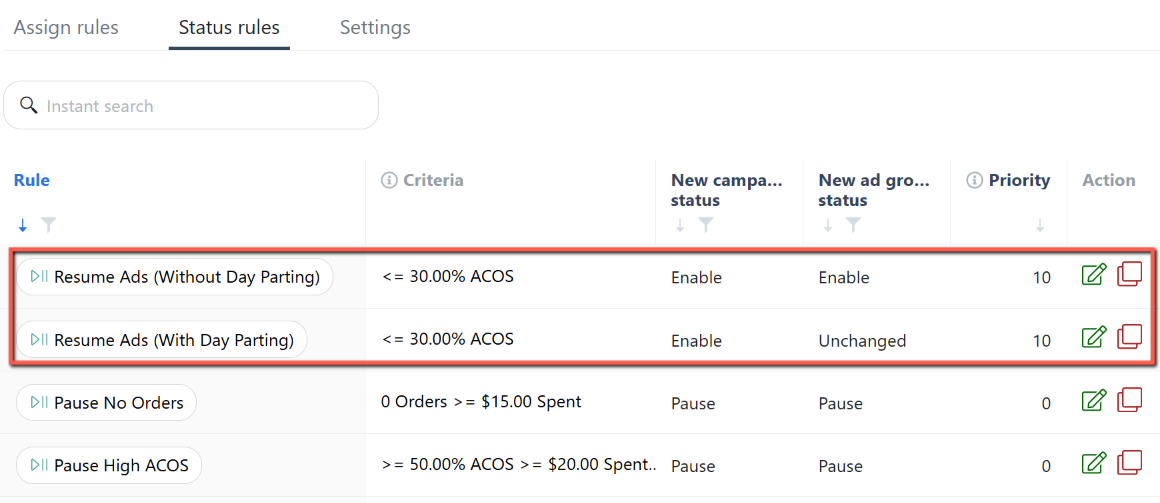- 02 Nov 2024
- 1 Minute to read
Considerations with status rule
- Updated on 02 Nov 2024
- 1 Minute to read
Sales attribution and data latency affects performance evaluation
If a customer clicks on your ad but purchases 7 days later, Amazon will attribute the sales to the day the user clicked on the ad, not the day of purchase.
Additionally, Amazon API may lag and occasionally return new sales data 1-2 days later.
These delays mean the status rule may pause a perceived bad-performing campaign with high ACOS. Once the sales data are updated, the campaign's ACOS may drop significantly, revealing it to be a good-performing campaign.
We never know a campaign's actual performance until much later after fully accounting for sales attribution and data latency.
There are two options.
- Pause fast and enable later: Avoid unnecessary ad spending by pausing perceived bad campaigns fast, then enabling campaigns that later proved to be good-performing.
- Pause slow: Avoid pausing potentially good campaigns by evaluating performance 7-10 days later, but pay more unnecessary ad spending on bad campaigns due to delayed pausing.
As most sales happen within a few hours after a customer clicks on an ad, there is generally enough data after 24 hours to estimate a campaign's performance.
To pause fast and enable later, assign the Resume Ads rules to enable a previously paused campaign that now shows good performance after sales data are updated.

